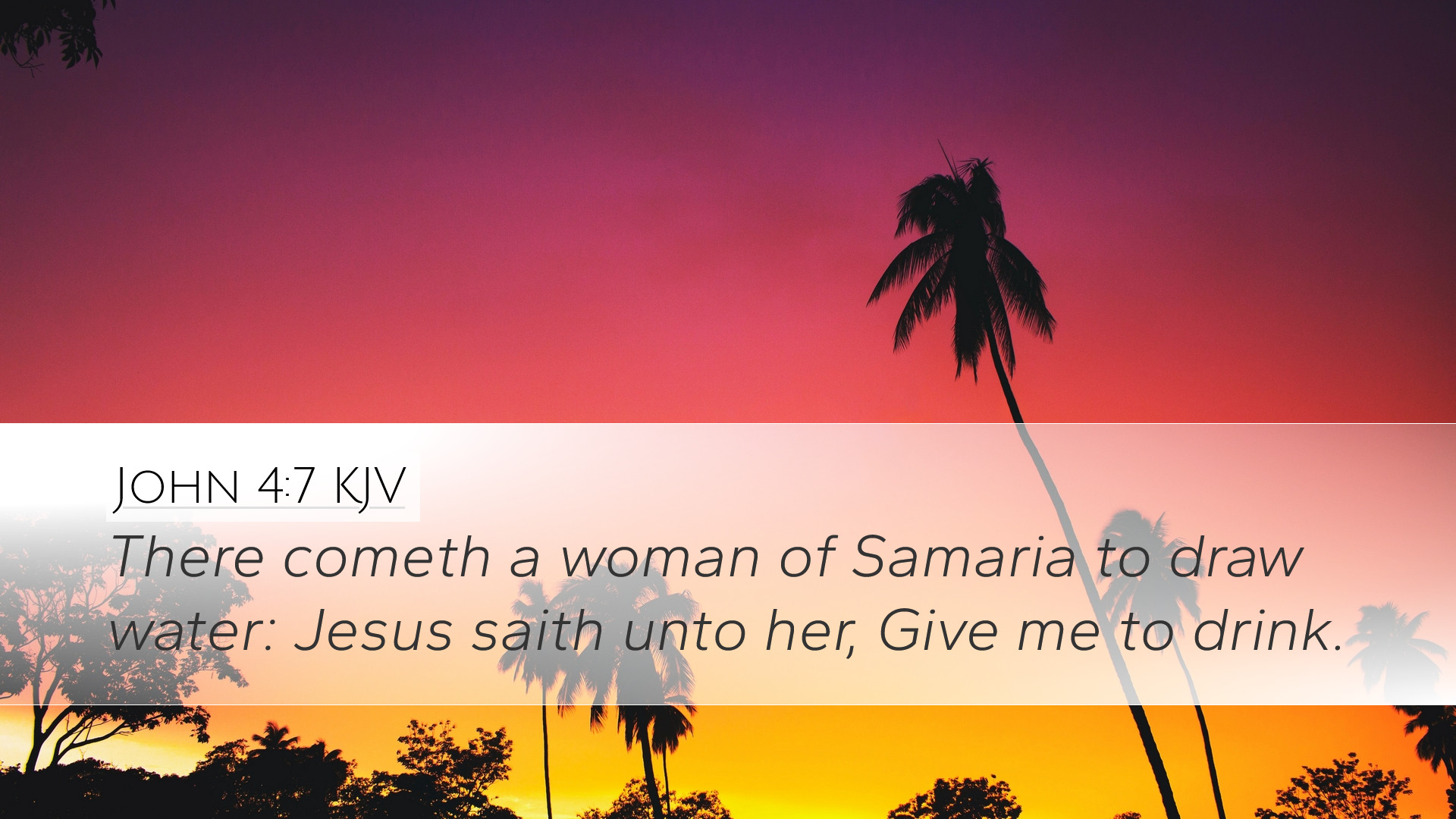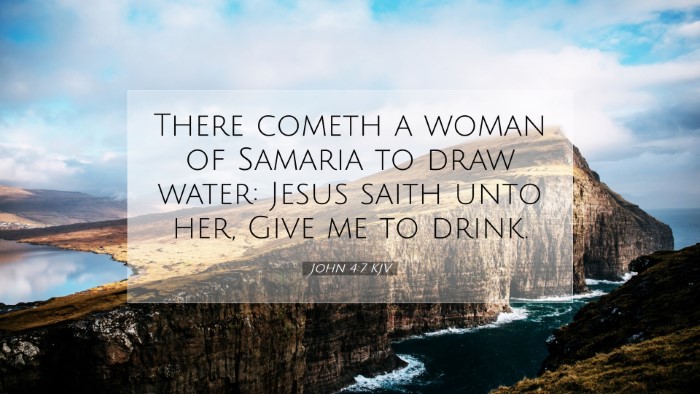Bible Commentary on John 4:7
John 4:7 states, "There cometh a woman of Samaria to draw water: Jesus saith unto her, Give me to drink." This simple yet profound verse encapsulates a pivotal moment in Jesus' ministry, where He breaks cultural barriers through His interaction with a Samaritan woman. Below, we will explore various insights from notable public domain commentaries to elucidate the meaning of this passage.
Contextual Background
Jesus’ conversation with the Samaritan woman occurs in Samaria, a region often despised by the Jews, specifically because of its mixed population and the historical animosities between Jews and Samaritans. This context sets the stage for a remarkable teaching on grace and acceptance.
Cultural Significance
- Matthew Henry: Henry elucidates the extraordinary nature of Jesus speaking to a Samaritan. Jewish culture typically rejected contact with Samaritans, yet Jesus’ request demonstrates His mission to reach the marginalized.
- Albert Barnes: Barnes emphasizes that Jesus’ interaction with a woman in public was also culturally improper, reflecting His willingness to confront societal norms.
- Adam Clarke: Clarke notes that this woman's historical background includes a strained and scandalous life, making Jesus’ approach even more radical as He seeks to minister to a social outcast.
Theological Implications
At the heart of this engagement is a rich theological tapestry that reveals aspects of Christ’s character and His mission.
Divine Initiative
- Matthew Henry: He stresses that Jesus initiates the conversation by asking for water, symbolizing humanity’s need for spiritual sustenance and God’s intervening grace.
- Albert Barnes: Barnes interprets this request as indicative of Christ’s humility and the necessity of recognizing our own needs and the needs of others.
- Adam Clarke: Clarke adds that this encounter illustrates God’s desire to engage with humanity in its diverse forms, breaking down barriers of ethnicity and sin.
Symbolism of Water
Water serves as a crucial symbol throughout the Gospel of John, representing life, purification, and spiritual nourishment.
- Matthew Henry: Henry suggests that the act of asking for water foreshadows the deeper spiritual truths Jesus will later reveal about living water, symbolizing eternal life and satisfaction.
- Albert Barnes: Barnes reflects on how, in this moment, Jesus’ request for water signifies the physical thirst that contrasts His ability to provide spiritual fulfillment.
- Adam Clarke: Clarke notes that the physical act of drawing water becomes a metaphor for the spiritual thirst presence in every human soul, which only Christ can satisfy.
Insights for Pastoral Application
This passage carries profound implications for pastoral ministry, teaching us about outreach, acceptance, and the transformative power of divine encounter.
- Reaching the Marginalized: Just as Jesus reached out to the Samaritan woman, pastors are encouraged to engage with individuals from all walks of life, recognizing that the Gospel transcends barriers.
- Emphasizing Humility: Jesus' request demonstrates humility and vulnerability in ministry. Pastors should embody this characteristic to foster genuine relationships.
- Living Water as Core Teaching: The doctrine of living water must remain central in preaching and teaching, allowing congregants to understand that true satisfaction comes only from Christ.
Conclusion
John 4:7 offers a powerful glimpse into the character of Christ and His willingness to engage with those society often overlooks. The insights drawn from the commentaries of Matthew Henry, Albert Barnes, and Adam Clarke collectively enrich our understanding of this passage. As we reflect on this moment, let us be challenged to break down cultural barriers in our own lives and extend the grace that we have received to others in need.


